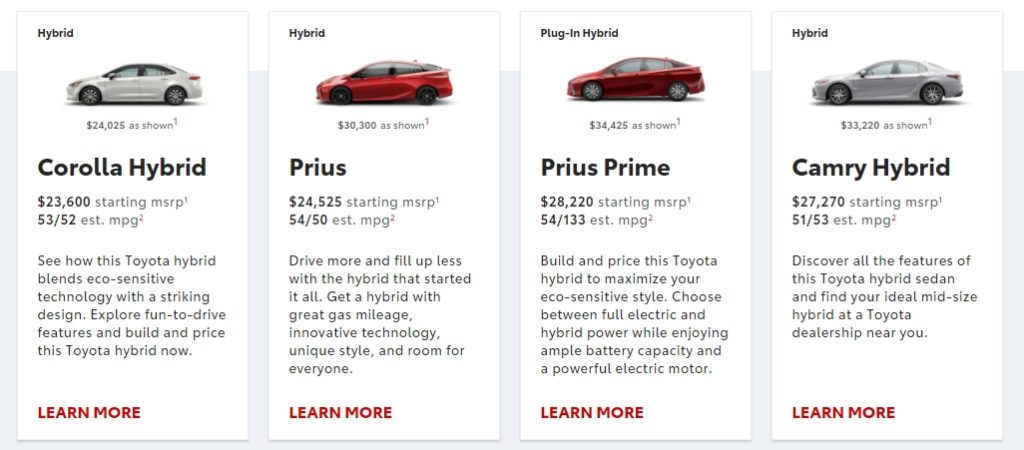You might have heard about hybrids before – electric vehicles like the Tesla Model S are popular these days because they’re cheaper on fuel and don’t contribute to air pollution (less so compared to gasoline engines). But what is this? A Hybrid! In today’s post, we will discuss the definition of a “hybrid” and how it differs from an electric vehicle.
Table of Contents
What is a Hybrid Car?

A hybrid car is a vehicle with two or more sources of power, typically an electric motor and some sort of combustion engine.
This type of car has been around in the commercial market since 1997 but it wasn’t until 2006 that Honda became one of the first major automakers to offer a hybrid model for sale as their mainstream product.
Today there are many different types on hybrids available including fuel-cell hybrids, plug-in hybrids and battery electric vehicles. The most popular type is a blended system which combines an internal combustion engine with either a small battery pack or regenerative braking technology and electric motors.
Power Sources in Hybrid Cars
A hybrid car can be a gas-electric or even an electric vehicle, with either one providing power to turn the wheels. The battery is recharged by recapturing energy from braking and slowing down of your engine at stops, which would otherwise have been wasted as heat in brake pads or flywheel momentum.
There are many different types of engines. For instance, some cars have electric motors that are powered by an A/C or D/C current which is then transferred to a turbine and rotates the drive shaft.
The most popular type of engine right now in hybrid vehicles is what’s called a series-parallel hybrid system. This has one large battery pack inside the car with all sorts of batteries within it like nickel metal hydride (NiMH) and lithium ion (LiOn). These allow for more power when accelerating as they’re able to store larger amounts of energy than just using lead acid batteries, but these also discharge rapidly so you’ll need another way to charge them up while on the go.
You can use regenerative braking systems to help with this or you can plug in the car to a home’s outlet, an electrical station for electric vehicles, or through your standard gas fill-up.
The series-parallel system is what allows cars to switch between using the large battery pack and their regular engine depending on whether they’re going uphill/downhill or if the driver wants more power. The best part of these systems is that they don’t require any new type of technology for charging up which means there’s less risk associated with investing in them as opposed to hybrids from years ago. They also have better fuel economy than traditional engines at least when it comes to city driving due to regenerative braking and energy recapture while breaking (by converting kinetic energy into electricity).
Another type of power source is one used in a traditional gasoline powered car and it’s what provides the most power. It can be used to start up the vehicle, provide on-the-go acceleration and keep things running while idling such as air conditioning or heating systems.
The downside to this type of engine is that it has an emissions system which requires emission controls like catalytic converters, fuel injection systems with computers etc. These add extra costs but they’re necessary for everyday driving because if too many pollutants are released into our environment then we’ll have major environmental problems on our hands down the road so all cars sold now need these types of engines installed regardless of how good they are for hybrids.
Advantages and Disadvantages of Hybrid Cars
Advantages
Fuel Efficiency
A hybrid car is a vehicle that can be more gas efficient than many other types of vehicles in the same class.
Lower emissions
Hybrid cars have a lower emission rate than traditional vehicles and emit less air pollutants.
A hybrid car can run on electric power for the first one or two miles before switching to gasoline, which means that it doesn’t require fuel until it’s needed. For example, when you’re driving in stop-and-go traffic or climbing hills–or even if you just want to save gas money! This not only saves drivers from having to fill up their tank often but also reduces carbon dioxide emissions by at least half because hybrids are generally more efficient with combustion engines off.
The engine is shut down during periods of nonuse (such as while stopped) reducing harmful exhaust gases like nitrogen oxide and hydrocarbons emitted from the tailpipe.
Disadvantages
Hybrid cars are generally more expensive than their traditional counterparts because they require special overhead costs for research and development that standard models don’t need.
The main downside of these vehicles is that hybrids tend to cost significantly more money up front than conventional sedans but still receive about 16% better fuel economy on average–which means you’ll recoup some of those savings over time when it comes to filling up fuel.